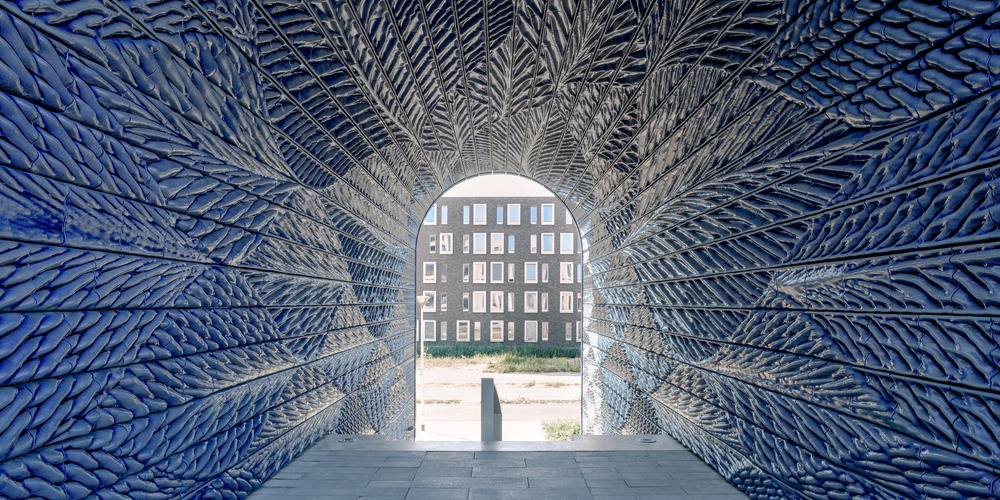Nieuw Delft is a vibrant new urban area adjacent to the historic city center and the new Delft train station. Developed in part by Ballast Nedam Development, the project features fossil gas-free homes with excellent insulation, ventilation, and underfloor heating, making the buildings nearly zero energy. Enhancing urban biodiversity, the developments include butterfly gardens, green facades, and climate-neutral rooftop gardens.
Combining exceptional architecture and innovative design, Nieuw Delft offers easy access to the historic city center and modern amenities. The area blends shopping, living, learning, working, and recreation, merging old and new. Sustainable mobility is promoted through shared electric cars and a new public transport hub with an international train station.
New Delft Blue is a groundbreaking initiative in the historic city of Delft, conceived and executed by Studio RAP. This project reimagines the iconic decorative elements and design traditions of Delft Blue porcelain through modern techniques. By blending 3D clay printing, computational design, and traditional glazing methods, New Delft Blue seeks to explore new architectural possibilities for ceramic decoration in the 21st century.
Situated in the lush communal courtyard of the PoortMeesters residential block, which is part of the extensive urban redevelopment project Nieuw Delft, two grand entry gates define the space. These gates, measuring roughly four meters in width, eight meters in height, and twelve meters in depth, serve as an entryway to a large public staircase. They draw inspiration from Delft’s medieval past as a trading city, reminiscent of its historic city gates, and offer a glimpse into the serene courtyard life beyond.
The design of the New Delft Blue gates draws from the traditional Delft Blue porcelain plates, which have evolved over the centuries from mimicking Chinese and Japanese designs to creating distinctly Dutch motifs.
Despite these changes, a common feature has been the contrast between a decorative, nature-inspired border and an idyllic central scene. This concept is mirrored in the New Delft Blue gates, where the dynamic courtyard life represents the idyllic scene, framed by three-dimensional, algorithmically designed, nature-inspired patterns that guide visitors from the public to the semi-public space.
Covering the gates are approximately 3,000 unique ceramic tiles, all 3D printed to achieve a modern yet richly detailed aesthetic. The tiles’ geometry was generated with an algorithmic approach, factoring in manufacturing constraints such as maximum overhang, width, height, depth, shrinkage, and internal support structures.
The 3D printing process enabled the creation of varied tile shapes, allowing for a creative approach akin to ‘painting with shapes.’
A transparent blue glaze was applied, which created a light blue hue on the convex surfaces and deep blue pools in the concave areas, producing smooth gradients of blue. This deep blue color ties the design to traditional Delft Blue porcelain and the nearby canals while contrasting beautifully with the earth-toned brickwork of the surrounding buildings.
This project integrates Delft’s historical identity with contemporary elements, using nature-inspired, algorithmic patterns in blue and advanced 3D printing technology to represent Delft as a modern city of knowledge.
In the constantly evolving realm of architecture, Studio RAP, a team of architects based in Rotterdam, is reshaping the traditional role of an architect. They passionately blend architecture with entrepreneurship, manufacturing, and craftsmanship, reintroducing bespoke details to architectural designs. Their projects embody their vision, presenting a fresh architectural style that challenges conventions. Studio RAP’s ultimate goal is to infuse our world with greater excitement and diversity through architectural innovation.
Photography: Riccardo De Vecchi
The post New Delft Blue by Studio RAP appeared first on ARCHIVIBE architecture and design news.


